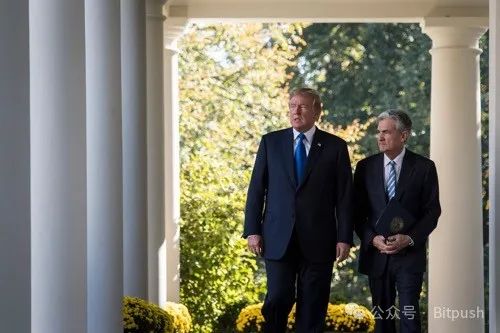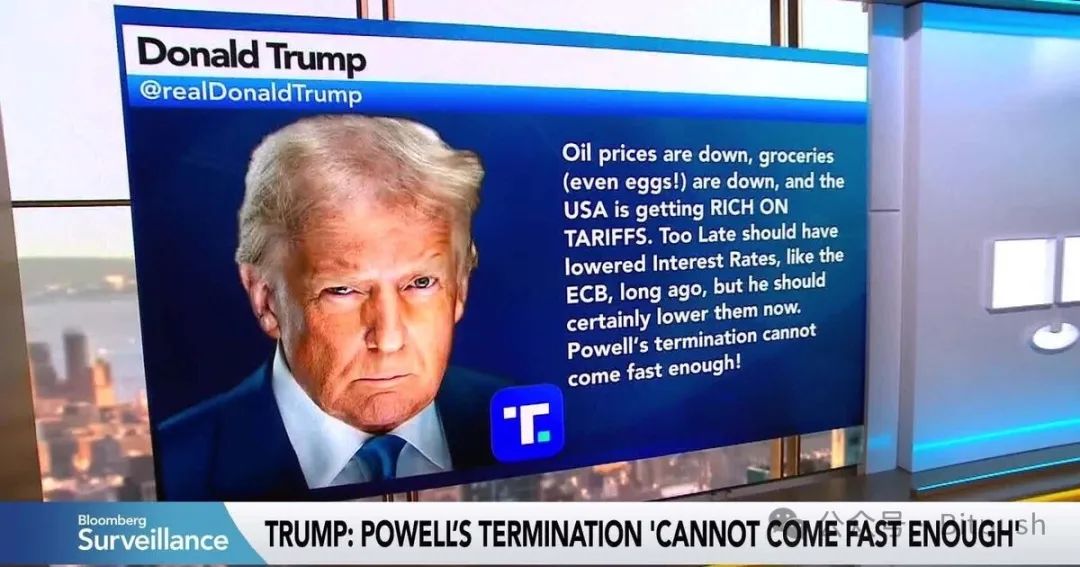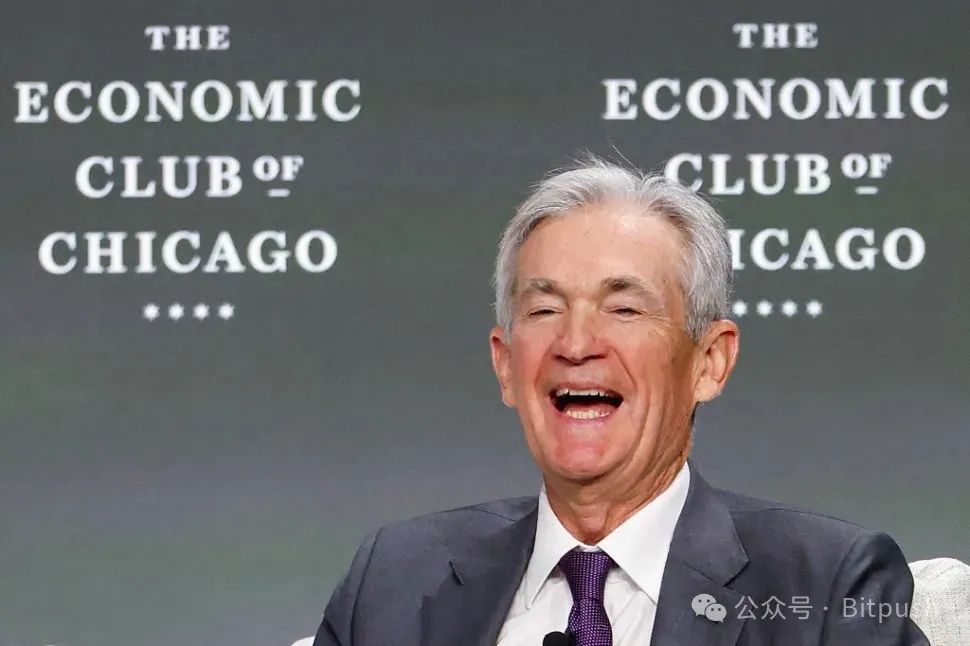This article is translated from Time, the original author Nik Popli

The Federal Reserve has long prided itself on its independence. But that tradition is coming under new strain as President Donald Trump intensifies his attacks on Fed Chairman Jerome Powell for his refusal to cut interest rates.
"If I wanted him gone, believe me, he would be gone very quickly," Trump told reporters in the Oval Office on Thursday.
On his social media platform Truth Social, Trump reiterated: "Let Powell go, no faster!"

The comments were among Trump’s most pointed moves yet to undermine the political independence of the Fed, a key institution traditionally separate from the White House and charged with maintaining economic stability.
The day before, in a speech to the Economic Club of Chicago, Powell pushed back against political interference and said the Fed would make decisions based solely on what is best for the American people.
Powell said in his speech: "This is the only thing we will do...We will never be influenced by any political pressure...Our independence is a legal matter."
Powell added that Fed governors “are not removable except for cause” and that “we have long, seemingly endless terms.”

Still, that hasn’t stopped Trump from trying to fire the Fed chairman. “I don’t think he’s doing a good job,” the president said Thursday, claiming Powell cut rates “too late.”
Powell was initially nominated to lead the Fed by Trump in 2017 and was renominated by Joe Biden in 2022. His current term as chairman will last until May 2026.
While successive presidents have previously expressed displeasure with the Fed’s interest rate decisions that conflict with its policy goals, Trump’s comments raised new concerns about political interference in monetary policy, a development that could spook markets and damage the central bank’s credibility.
Trump's aggressiveness has even caused concern among some of Powell's critics, including senior Democratic Senator Elizabeth Warren, who earlier warned that undermining the Fed's independence could spell disaster for U.S. markets.
“The Fed needs public confidence,” said Sarah Binder, a senior fellow at the Brookings Institution and an expert on the Federal Reserve. “But if the president tries to remove Powell, that just adds uncertainty that markets don’t want to see.”
Here’s what you need to know about the limits on the president’s power over the Federal Reserve and what that means for the economy.
Can Trump fire Powell?
Legally, the answer is complex and untested. No Fed chair has ever been removed by a president.
The Federal Reserve Act allows for the firing of board members, including the chair, “for cause.” But that has historically been interpreted as misconduct or incapacity, not policy disagreements. “Courts generally don’t view disagreements over rate setting as ‘misconduct,’ ” says Sarah Binder, a professor of economics at the University of Wisconsin-Madison.
Although Trump and his allies have raised the possibility of firing Powell since his first term, they have not done so, likely because of the uncertain legal prospects and the potential negative consequences.
Powell himself has made it clear that he will not resign on his own initiative. When asked in November if he would resign if Trump asked him to, he simply replied: "No."
Still, the Trump administration appears to be preparing for a potential confrontation. Treasury Secretary Scott Bessent recently told Bloomberg that he expects to begin interviewing possible replacements for Powell in the fall.
Trump's push to remove Powell comes as the U.S. Supreme Court is currently hearing a case involving the president's power to fire senior officials of independent agencies.
While the case involves the National Labor Relations Board and the Merit Systems Protection Board, its implications could be broader. If the court sides with the Trump administration, it could be interpreted as a signal of how it will resolve the legal conflict surrounding Trump’s desire to remove Powell, even though the Fed has said it does not believe the challenge applies to it.
At the heart of the debate is a nearly century-old legal precedent: the 1935 Supreme Court decision Humphrey's Executor v. United States, which limited the power of a president to remove the head of an independent agency without cause. The ruling has long protected Fed chairs from political dismissals, but it may soon be tested by a conservative Supreme Court.
The economic stakes
Trump accused Powell of failing to act aggressively enough to support economic growth, saying the Fed chairman was "playing politics" by leaving interest rates unchanged.
But U.S. central bankers — and many economists — hold the opposite view: An independent Fed is essential to managing inflation and guiding the economy, and giving in to political demands could damage the economy and global trust in U.S. institutions.
Powell insisted that the Fed's decisions are based "solely on what is best for all Americans."
In his speech on Wednesday, he warned that Trump’s wide-ranging tariffs could push the U.S. economy into a “challenging situation” of higher inflation and slower growth — a scenario that complicates the Fed’s dual mandate of stable prices and maximum employment. Trump’s tariffs have increased the cost of many imported goods, squeezed household budgets and raised concerns about a policy-induced slowdown at a time when inflation remains above the Fed’s 2% target.
Trump, meanwhile, called for an immediate rate cut, noting that the European Central Bank had already cut rates on Thursday.
The Yale Budget Lab estimates that the inflationary effect of Trump’s tariffs is equivalent to an effective tax increase of $4,900 per American household. At the same time, long-term interest rates have soared, making borrowing more expensive for homebuyers, businesses and consumers.
Jerome Powell's Experience
Powell, 71, is currently serving his second term as chairman of the Federal Reserve, the most powerful economic policymaking body in the United States. A Republican and former investment banker, he was originally appointed to the Fed's board of governors by Obama in 2012 and promoted to chairman by Trump in 2017. Biden later reappointed him, a sign of broad bipartisan confidence in his ability to helm the central bank.
During Powell's tenure, the Fed has dealt with a series of economic shocks, from a pandemic-induced recession to the worst inflation surge in four decades. Under his leadership, the central bank cut interest rates to near zero in 2020 to stabilize the economy amid COVID-19, and then began raising rates in 2022 to curb inflation, which has soared to more than 9%.
While inflation cooled somewhat in March, to a six-month low, the journey has been bumpy, and Powell has been criticized on both the left and the right for whether the Fed has moved too slowly or too aggressively.
“Support for Powell is probably down significantly from what it was during (Trump’s) first term, when the economy was doing really well,” Binder said. “Many people are probably going to say the Fed made a big policy mistake by coming too late to curb inflation in ’22-’23. So the question now is, who’s going to stand up and support the Fed in this situation?”
















